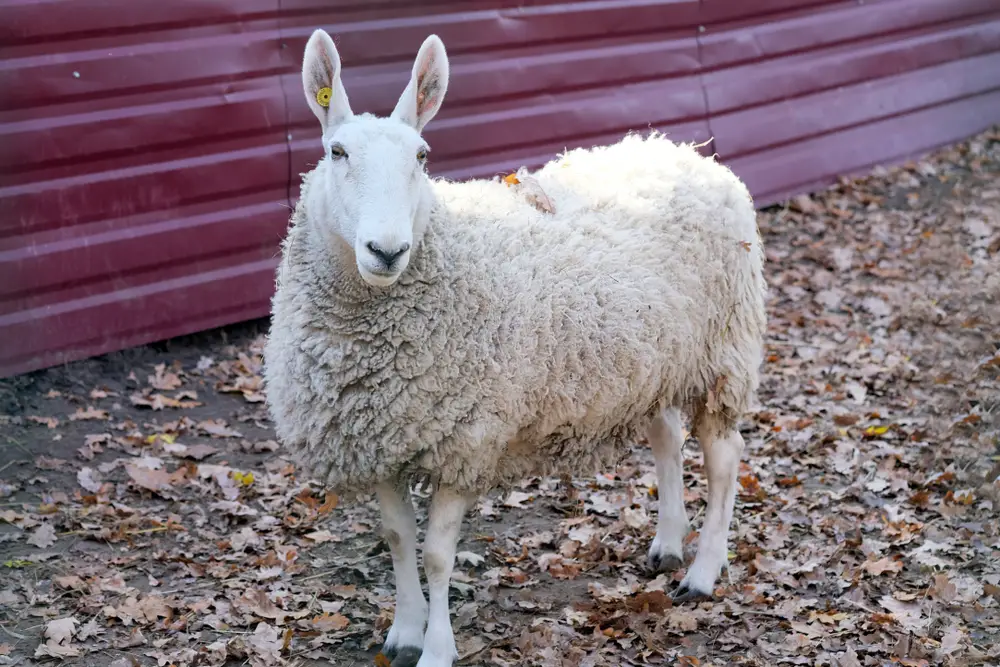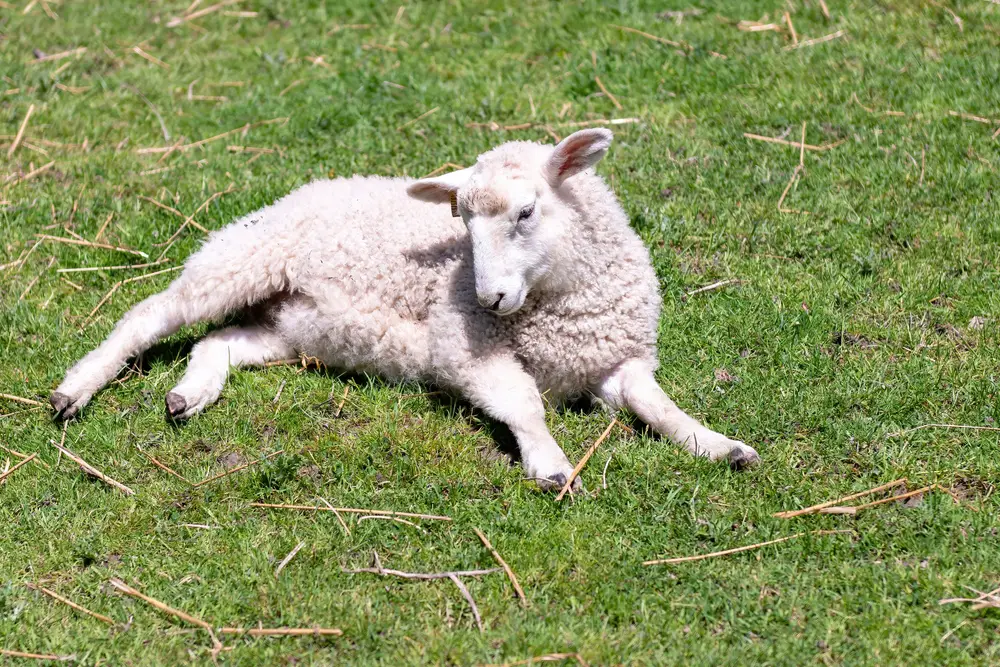Border Leicester sheep are a dual-purpose breed of British sheep that are both large and docile. They are a pooled and all-white sheep that offers lovely wool as well as plentiful mutton.
This article will cover the history of the Border Leicester sheep, their breed attributes, and examine the characteristics of their wool in detail. It will also list the positive attributes and benefits of owning this breed of sheep.
Table of Contents
Where Does The Border Leicester Sheep Come From?
The Border Leicester sheep was one of the varieties of sheep bred from Robert Bakewell’s flock of improved English Leicester sheep. He developed them in Northumberland, England in the late 1700’s.
They were originally called Dishley Leicesters and farmers in England and Scotland purchased them from him before starting breeding programs of their own in an attempt to improve upon them.
One flock owned by the Culley brothers was crossed with Teeswater ewes, and the other, was crossed with Cheviot sheep. The sheep that gained the most desirable traits were the Dishley Leicesters that had been crossed with Cheviot sheep, and they became the surviving and preferred breed.
Around 1850, after the breed had established itself, it gained the moniker Border Leicester, to differentiate them from their predecessors.
The Border Leicester has been imported to several countries across the world, most notably including the United States and Australia which maintain large flocks.
There are several breed associations for the Border Leicester and they depend on the country in which the breed resides:
| Region | Association |
| The United States and Canada | The American Border Leicester Association |
| United Kingdom | The Society of Border Leicester Sheep |
| Australia | The Australian Border Leicester Association |
In Australia, Border Leicester rams are crossed with Merino ewes in order to create a beautiful crossbred ewe, which is then crossed with Southdown or Polled Dorset sheep to make prime lambs. These lambs have the perfect proportions and characteristics that make them ideal for meat production.
The Border Leicester was also crossbred in Australia with Romney sheep to produce both Coopworth and Borderdale sheep.
Border Leicester Sheep Breed Characteristics
| Characteristics | Description |
| Origin | Britain |
| Appearance | Border Leicester are a white, polled sheep (without horns) and is known as a long wool breed. They have large, well-sprung ribs and a distinctively long back that is broad and strong. It has muscular legs and dark hooves. They also have a clean face with a black muzzle, a roman nose profile, and large, alert ears. It should not have wool on the lower legs (though they are covered in white hair). |
| Wool | Micron range from 32 to 38 Wool grade is between 40s to 50s Staple length between 6 and 10 inches Grease fleece weight of 8 to 12 pounds Yield between 60 and 70 percent |
| Weight | Rams weigh between 309 and 386lbs Ewes weigh between 200 and 260lbs |
| Fertility | Naturally fertile and reasonably easy lambing |
| Meat | Flavorsome and high quality |
| Environment | Does best in cooler climates and lives between 10 and 12 years |
| Common Uses | Dual-purpose – meat and wool production |

What Kind Of Fleece Does The Border Leicester Produce?
Border Leicester wool is long, lustrous white wool that is crimped. The wool is popular amongst spinners and weavers due to the high-quality, length, and natural pencil curl of the wool.
Why Should I Raise Border Leicester Sheep?
There are many reasons why you should consider raising Border Leicester Sheep on your sheep farm:
- Wonderful breed for wool production and popular for handspinning
- Border Leicester lambs grow quickly with good feed conversion
- Mature ewes make excellent mothers
- Easy to manage with docile personalities
- Produce excellent, high quality meat

